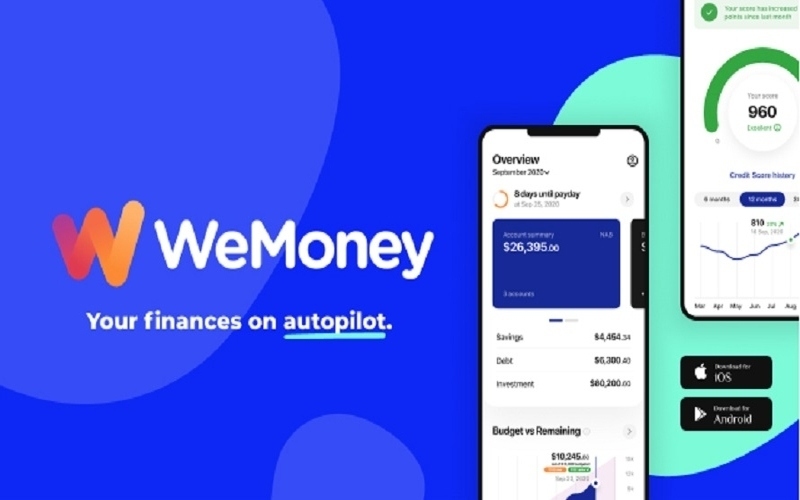In an alternative to savings accounts and one-year term deposits many Australians have been looking at other ways to squeeze more juice out of their cash and make their money work harder for them.
This is where micro-investing platforms have stepped in, proving popular for their simplicity, user friendliness, and ease of exposure to many share and investment markets across the world.
However, many of these still have a heavy focus on the share market, which can be volatile. But what if you could mitigate risk somewhat, and invest in ‘fixed income’ assets? This is where a new platform - Blossom - could prove useful.
What is the Blossom micro-investing app?
Founded by young entrepreneur Gaby Rosenberg (pictured above), and backed by Gleneagle Asset Management, Blossom provides Australians with a simple way to invest in ‘fixed income’ assets.
The app’s goal is a 5.95% p.a. return on principal investments (net of fees and expenses). Blossom has been fairly diligent at upping the rate of return as bond yields and the RBA cash rate push higher.
However in 2024 Blossom launched a new product line with up to 7.00% p.a. returns - more on that later.
This rate is more competitive than those offered by savings accounts and term deposits, with no fluffing around with minimum deposit and transaction requirements. But savings account or term deposit Blossom is not, and as such it does not come with the government guarantee on deposits up to $250,000.
Blossom invests in things like corporate bonds, government bonds, foreign exchange and derivatives, asset backed securities, mortgage backed securities, and more. Traditionally, these types of investments have been reserved for hedge funds, financial institutions, superannuation funds, and high net-worth individuals. But not anymore.
-
Blossom’s app allows everyday investors exposure to these apps, with no minimum investment required.
-
Users can sign up via the Blossom app, or through the Blossom website. From there, users link their bank account, deposit funds and then Blossom does the work for them.
Ms Rosenberg told Savings.com.au that Blossom democratises the fixed-income investment space.
"Amid global uncertainty and volatile trading markets, we are democratising the fixed income market for the everyday Australian, a market previously reserved for institutions and high net-worth individuals," Ms Rosenberg said.
"Typically, if an average Australian wanted access to the fixed income market, they’d be looking at high minimum deposits, caps on investment amounts, lock up periods, sophisticated investor limitations and fees. We’re here to change that."
Blossom sign-up and start
In June 2021 I gained access to Blossom’s early sign-up list, which at the time of writing had already amassed $2 million in funds under management in as little as two weeks.
As of December 2023 it had more than 12,000 customers with $50 million in funds under management.
After downloading the app, all the usual manner of identification verification takes place - email, address, and drivers license or passport. You should also have your Tax File Number (TFN) handy to input, so you are not taxed on your gains at the maximum marginal rate, but you can input this info later.
From there, the app acts like other micro-investing apps or bank account apps you are probably already familiar with. However, one major point of difference I have noticed is that you have a choice to either direct debit your funds, or use PayID.
Both are more secure ways to make deposits, adding a layer of security between you and payee, so that is a nice feature. Some other apps demand your banking password, which can make the hairs on the back of your neck stand up.
Blossom fees and charges
With Blossom, there are no withdrawal, performance, or exit fees, which investors might have come to associate with other investment platforms.
Instead, there is just one fee - a 1% p.a. management fee.
In addition, this is only charged once customers have been paid their return.
Compared to other types of investments, these fees are comparable. For example, other micro-investing apps typically charge a brokerage or monthly fee of $2-$3.50, which when extrapolated over a year can equal more than 1% of the principal. And if you’re opting for an exchange traded fund (ETF), typical management fees of the cheapest funds per year can be around 0.25%.
ETFs, too, need to be purchased through a broker, which have brokerage fees - anywhere from around $10 to $30 per transaction is common. For a more detailed comparison, look at Blossom’s product disclosure statement, and see how the fee structure stacks up with other investment platforms.
Another point of difference, too, is that Blossom is actively managed by Fortlake Asset Management.
"The Founder and CIO of Fortlake, Christian Baylis, has over 18 years of experience across global fixed income and derivative strategies," Ms Rosenberg said.
"He has a PhD in Econometrics and previously worked at UBS Asset Management and the Reserve Bank of Australia (RBA).
"Our ESG expert, Dr Kylie-Anne Richards, the Chairwoman of Fortlake helps to ensure Blossom makes ethical and purposeful investment decisions. Together, Christian and Dr Kylie work with a world-class team and we’re thrilled to benefit from their expertise."
Blossom Plus - Up to 7.00% p.a. returns rewarding you for loyalty
Blossom Plus is a new app feature launched in March 2024. It essentially promises bigger returns in exchange for a time commitment and larger minimum deposit.
- A three-month minimum commitment/notice to withdraw funds instead of daily.
- A $5,000 minimum investment instead of $5.
- A $500 minimum top up instead of $5.
- Interest is compounded quarterly instead of daily.
Like with the regular Blossom product earnings are still posted daily, and apart from the change in use requirements, what makes up the portfolio appears to be the same.
The regular Save product might suit someone with a shorter investment timeline or who might need the funds in a shorter timeframe, while Plus users might have a longer timeline and will not need those funds for at least three months.
In this sense the regular product could be considered like an at-call savings account, with funds able to be withdrawn more regularly and less onerous minimum deposits.
The Plus feature could be thought of like a term deposit, with stable returns in exchange for funds being locked away with a higher deposit commitment.
However, as we've explained, Blossom is not a bank account.
Is Blossom safe?
It’s important to note that Blossom is not a savings account or term deposit - it is an investment vehicle, trading in things like corporate and government bonds.
"Many of the other micro investing apps focus on investments into stock market and/or ETFs, which are generally seen as higher risk investments," Ms Rosenberg said.
"The Blossom Fund underlying investments will be selected for being investment grade fixed income products, to maintain over time, an average portfolio rating of A.
"The risk profile is different because fixed income investing is exactly what it sounds like, investments that pay a 'fixed rate': corporate bonds, government bonds, cash, mortgage backed securities and more."
Ms Rosenberg also said withdrawals can also be requested at any time through the app, however did point to some ‘unlikely’ scenarios.
"As with any fixed income fund, the law and Fund Constitution have to allow for possible suspensions of redemptions and even for extended delays [in withdrawing] but we think that is unlikely," she said.
The way Blossom mitigates risk is by:
-
Threshold Management Agreement - when the Fund makes interim excess returns above 4% p.a., the excess will be paid to us and reserved to help us pay external fees and to fund potential interim returns less than 4% p.a.
-
Diversified Strategy - Investing in highly liquid, investment grade assets that can be easily sold and unwound.
-
Underwriting Deed - At our discretion, we also have the ability to use our responsible entity to help fund withdrawals should we need to.
More details on how Blossom manages risk and withdrawals are in the PDS, which is available on its website.
Blossom investments explained
As mentioned earlier, Blossom’s investments are actively managed by Fortlake Asset Management. This is different from an ETF, which are often passively managed i.e. managed by an algorithm that tracks certain indices. The rough breakdown of Blossom’s investment portfolio is as follows:
-
Corporate bonds - 65%
-
Financial corporate - 30%
-
Mortgage-backed securities - 2%
-
Government guaranteed Bonds - 2%
-
Cash - 1%
Ms Rosenberg explained the differences in investments between Blossom and ETFs or Listed Investment Trusts (LITs) further:
"A LIT, such as VAF or GCI [explained further below], are similar in their underlying investments but are still listed securities on the stock market whereby investors can buy and sell their units to each other, which lends itself to stock market volatility that Blossom is not subject to as an unlisted managed investment scheme," she said.
"Listed fixed income funds can also trade at a discount (or premium) to what they are actually worth, often not being fairly valued as what the underlying investments are worth.
"Earnings generated from Blossom accrue daily, meaning you can see your earnings blossom each day within the app. We have also removed minimum investment amounts to fully democratise this market.
"The aforementioned ETF/LITs have minimum deposits starting at $500 as does any other security on the ASX."
Blossom benefits and risks
As with any investment, there are benefits and risks. A quick snapshot of the risks and benefits with Blossom are below.
Pros - Benefits
-
Potentially higher rate of return: With a targeted rate of return of 5.95% p.a. and no deposit conditions, this is much better than what you can achieve on many high-interest savings accounts and term deposits.
-
Lower-risk than shares and crypto: ETFs, particularly high-growth ones, can carry a fair amount of risk. Individual shares can too, and let’s not even mention cryptocurrency. While these platforms might return higher yields, Blossom could offer a good ‘middle ground’ between a term deposit, and more risky investments.
-
No minimum investment: The major downside with an ETF or with other types of investing, such as P2P lending, is that they might require a minimum investment. Usually this is around $2,000-$5,000. That, too, attracts brokerage fees. With Blossom you can continually put in your spare change and smaller amounts, with only a management fee to think about.
Cons - Risks
-
Not an ADI: An ‘authorised deposit-taking institution’ is essentially a bank backed by the Government’s deposit guarantee. All deposits are guaranteed up to $250,000 per ADI. To reiterate, Blossom is not a savings account or term deposit.
-
Not CHESS-Sponsored: CHESS-sponsored shares are basically shares that the ASX has a record of you owning. Individual shares bought through a broker are commonly ‘CHESS sponsored’, meaning you own the deed to them. There is a paper trail that you’ve owned them. With Blossom, you are investing in a trust, which then invests in instruments such as bonds.
-
Not entirely risk free: While bonds and other ‘defensive’ investments are generally safer than shares, there is still some risk, especially if you’re investing in foreign exchange and derivatives. Blossom only invests in BBB-rated bonds or better, with an overall portfolio rating of A, but we all saw what happened with ratings agencies during the Global Financial Crisis…
Other fixed income options
You don’t need to be a rich supremo or a big company to invest in ‘fixed income’ products such as corporate and treasury bonds, and mortgage securities. Some options on the market are:
-
ETFs: Some ETFs, such as Vanguard’s ‘VAF’ focus on investing in fixed income assets, particularly corporate and government bonds. ETFs generally need to be purchased through a broker, which charge brokerage fees (usually $10-$30 per transaction).
-
LITs: Listed investment trusts, such as Gryphon Capital’s ‘GCI’, are ASX-listed and tend to have a focus on mortgage-backed securities.
-
P2P Lending: Peer to peer investing uses pools of personal loans, with a borrower paying an interest rate, and individual investors receiving a return on their investment. However, P2P is usually higher risk than other ‘fixed income’ products.
-
Your superannuation: Some superannuation funds allow customers the ability to choose their portfolios, with ‘defensive’ portfolios favouring bonds and other ‘safer’ investments. ‘Lifecycle’ super investment strategies also invest in safer assets as the customer gets closer to retirement. The only catch is you usually can’t access your super until preservation age.
While there are quite a few options for fixed income investments out there if you’re willing to look, Blossom looks to be pretty convenient. However, you should always read the fine print and know what you’re getting yourself into. None of these options are better than the other, but depends on the individual and their investment strategy.
Savings.com.au's two cents
Blossom’s product is distinct in the market in that it offers the everyday consumer access to investments previously only available to the few. With a catchy name and a user-friendly app, it’s sure to appeal to a vast variety of investors. With a portfolio return of 5.95% p.a., this is better than yields on many savings accounts or term deposits.
While lower than the potential gains to be made on the share market or in cryptocurrency, Blossom’s underlying investments are generally safer, meaning it exists in the ‘middle ground’ of the investments spectrum. However, the product is not entirely risk free, and as with all financial products, you should do your research and read the fine print before taking the leap.
First published on June 2021
All images supplied


.jpg)

 Brooke Cooper
Brooke Cooper
 Emma Duffy
Emma Duffy






